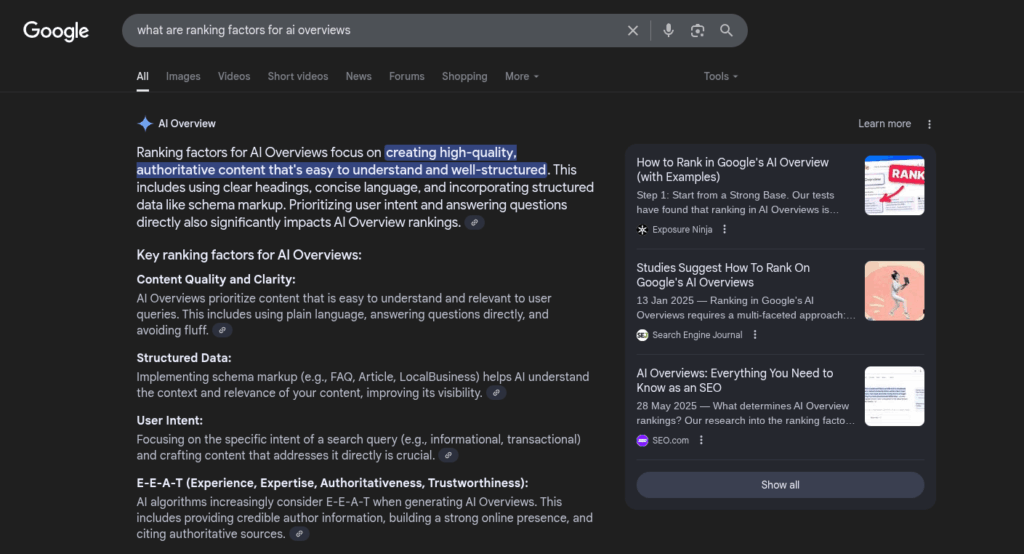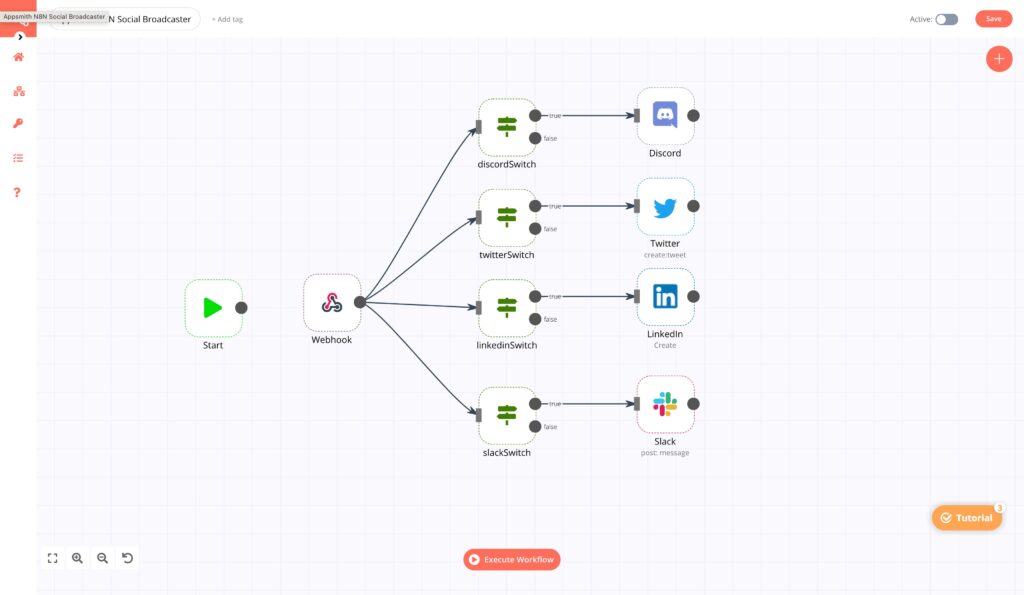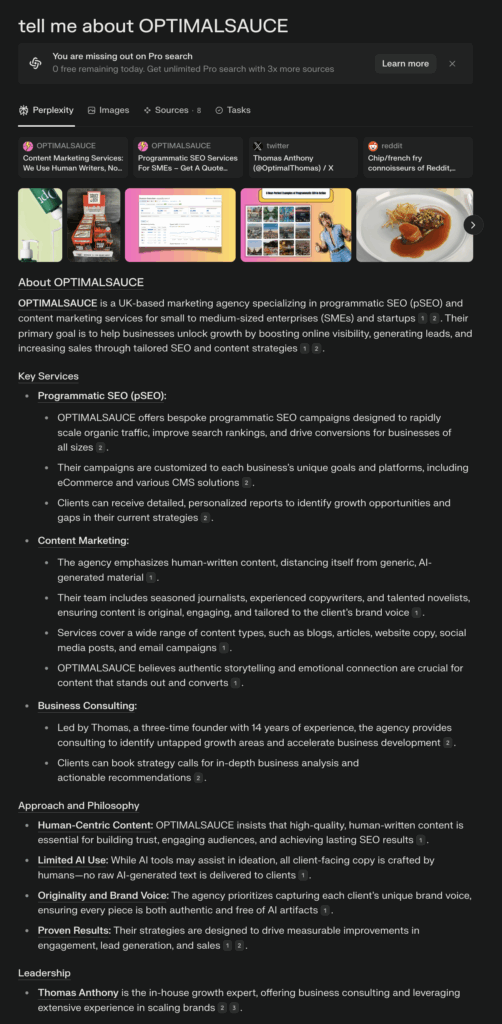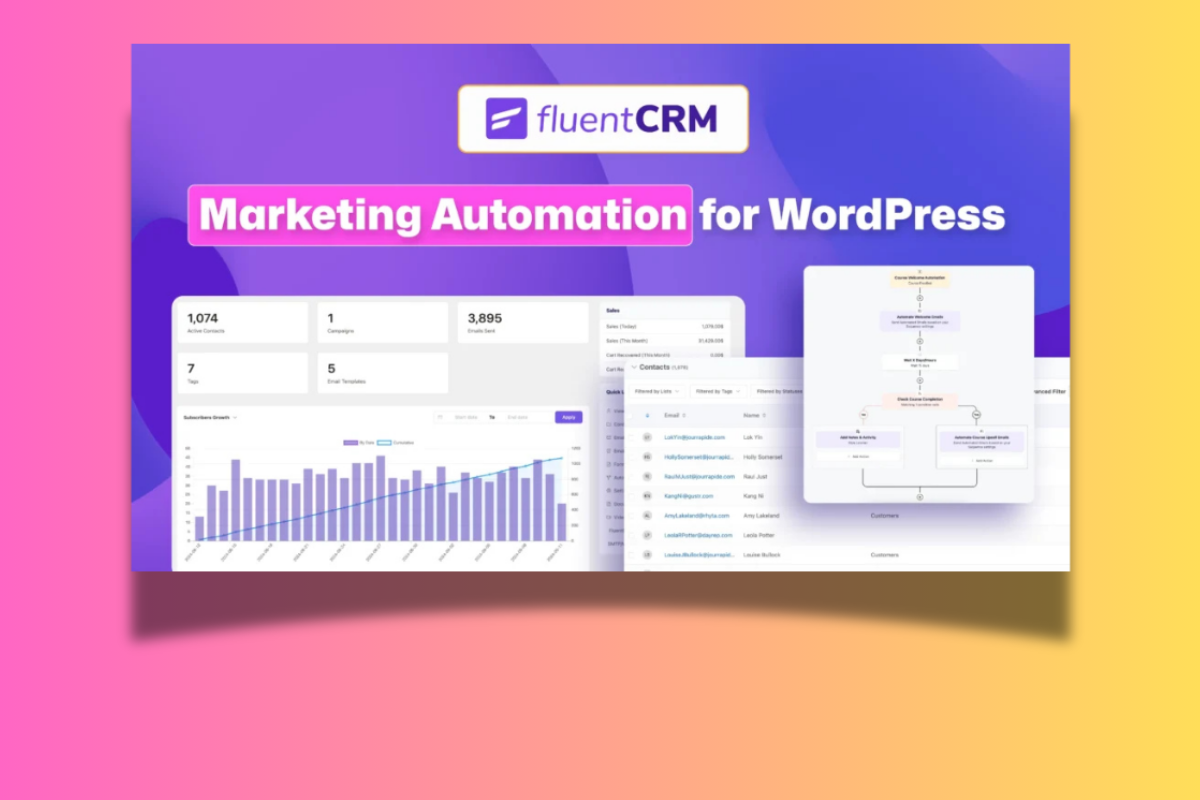I’m going to split this post up into a few, select sections. The first bit is about AI search, what it is, and why it isn’t all that different from traditional search engines like Google and Bing.
The next bit is basically a checklist of stuff you have to do to ensure you’re “fully optimized” for visibility inside AI search.
I’m not trying to sell you a course. I don’t want you to buy any tools. All you need to do is read. By the end, you’ll know more about AI search than 99.9% of people.
With anything new, there’s always good stuff and bad stuff. That’s just the way of things with this kind of stuff.
Let’s do the good news first.
The Good News…
Despite what you hear from gurus on YouTube, hungry to sell more course subscriptions, doing “SEO” for AI search isn’t all that different from doing SEO for Google or Microsoft’s Bing.
Perplexity literally just does a Google search on your behalf and then collates the data in its own version.
If you already do traditional SEO to a high standard, meaning you create content for your audience that helps, guides and assists them on their journey (towards your product and / or service), you have decent links and pagerank, you’re already in pretty good stead.

You don’t need to relearn how to write content or how to build sites. You just need to know WHAT content works for YOUR business, and how to make it work for you in the SERPs and in AI Search.
If you’re running clean code on your site (HTML, not JavaScript), you have schema in place, and you’ve taken the time to understand your audience’s needs and wants, you’re already half way there.
Knowledge packs help, they’re E-E-A-T gold. They show that Google not only knows who your brand is but it also trusts you as a source. This makes visibility in AI Overviews much easier.
There’s some technical stuff you need to do as well. But honestly, the bulk of “optimizing for AI Search” is no different than what you have to do to rank in traditional search engines: links, topical coverage, solid on-page and off-page signals.
If you have these, Google will index your site in its SERPs and, by proxy, so will its AI model and other AI models like Perplexity and ChatGPT.
The Bad Bit…
You cannot talk about AI Search without talking about CTR (click-through-rates), so let’s get that out of the way upfront.
CTRs suck inside AI search.
AI search is designed differently to traditional search. It is meant to give the user a quick answer; if you’ve used ChatGPT you’ll know what I mean. It’s spartan to say the least.
Links to external sources, if they’re present at all, are small and are clearly NOT designed for engagement from the user.
This means, even with excellent visibility in AI search, you’re still looking at much lower traffic levels when compared to traditional search engines (even with things like AI Overviews in play).
And the worst part of all this (at least for some) is that there’s nothing you can do about it. AI search is more like billboard advertising: it’s all about brand visibility.
Or, more specifically, making sure your brand or product or service is the answer to what people are looking for.
AI Search Stats
- ChatGPT hit 365B searches in 2024, rivaling Google’s 2009 volume just two years post-launch.
- AI referrals to retail sites surged 1,300% during the 2024 holiday season.
- 80% of users complete 40% of searches without clicking a single link.
- Google’s AI Overviews now reach 1.5B users monthly across 140+ countries.
- The AI search market is on track to triple by 2032, hitting $108.88B.
AI Overviews, Perplexity, ChatGPT, and Claude have altered search behavior which is why your content strategy HAS to change.
For information sites and affiliates (think blogs and hobbyist sites), this is bad news. These sites relied on being the answer machines for people’s questions.
For all intents and purposes, they’ve been cut out of the conversation.
For brands and product / service providers? Not so much. Your job now is to ensure that YOUR brand, product or service is the ANSWER to people’s searches.
And how do you do that? Simple: with great content.
Here’s How to Optimize for the New Era of AI Search
Think about modern SEO (and that includes AI Search) like this: you’re building a house, a sensible, purpose built abode. It is designed just for your needs.
It does exactly what you want it to, and nothing more.
Everything has its place and everything serves a purpose. There is no waste, no superfluous bits and bobs that don’t really do anything or add value. Anything that doesn’t need to be there isn’t.
This is how you run your content from now on.
You strip the fat, focus on quality, and then refine, refine, and refine some more. You don’t need thousands of backlinks and thousands of pages anymore.
You need to cover what YOU need to cover to get your message across to your potential customers, nothing more.
You stay in your lane, cover only what makes sense, and you build out content that communicates way YOUR product, brand or service is great for X, Y, and Z reasons.
Forget going after vague stuff outside your niche like Forbes, no business brand should be covering things like the best sunglasses for cats, and drill down on the niche you’re in and OWN it.
Now, doesn’t that sound a lot simpler and easier than arbitrarily chasing random keywords because they might bring in some traffic?
10 Simple Ways To Better Optimize Your Content For AI Search

1. AI Doesn’t Care About Keywords. It Cares About Context.
In my experience, this is the most important thing to keep in mind when creating content
So while you’re optimizing for phrases like “top email marketing software,” your actual customer is asking:
“What’s an email tool that’s affordable, easy to use, and doesn’t suck at automations for a 3-person ecomm brand?”
That’s the real query. The language is natural, how people type and / or talk, so this is how you want your content to feel. The less robotic, the better.
That’s what AI search is built to understand which is why search engine rankings, in the traditional sense, aren’t as important. AI models pull from everywhere, not just the top results.
Even Google’s AI Overviews does this.
You’ll find results from deep inside the SERPs inside AI Overviews because it provided the best, most focused answer.
This is why it is important to ensure that your business is the answer to your potential customer’s questions and queries. And to do this, you need to create content in a slightly different way.
Here’s what to do instead:
- Use tools like AlsoAsked, AnswerThePublic, and Frase to uncover how real people phrase real questions.
- Mirror the way your audience actually talks. Don’t write a brochure. Write like someone answering a frantic email or Slack message from a peer trying to make a smart decision fast.
- Focus on use cases, not categories. “Best project management tools” is a black hole. “Tools that help creative agencies track client revisions without losing their minds”? Now we’re talking.
- Think in semantic clusters, not exact matches. AI understands relationships between terms. Don’t stuff keywords into your content, use real-world data, customer data, and tell stories with the context.
Build content for humans with real problems. AI will reward that. So will your audience.
2. Schema Markup Is Non-Negotiable
Schema can be tricky to implement if you’re not technical. But it is worthwhile having on your posts and pages.
It’s not a silver bullet but it does help bots and crawlers better understand the contents of your website’s posts and pages, so I’d argue it is worth doing.
But don’t fret about it too much; there’s plenty of great tools for doing it in WordPress and, if you prefer the manual approach, you can have ChatGPT do it for you.
I actually built my own custom GPT that does all my schema for me. I just give it the URL and it does the rest.
All I have to do is paste it into a HTML block inside the post or page.
If you’re using an SEO plugin like RankMath, it’s even easier to implement schema on your websites.
RankMath comes with built in blocks for FAQ and How-To schema, so you can use it inside the WordPress editor.
What schema should you use for AI search? You don’t want to overdo it, just focus on the basics. My go-to schema formats for most of my projects and our clients are:
FAQPage,HowTo,Articleschemas- JSON-LD formatting
- Clean
H1–H3hierarchy
Tools like Schema Markup Generator help.
Why it matters: Perplexity and ChatGPT rely on clear semantics to pull summaries, not parse walls of text.
3. What Type of Content Does Well In AI Search?
As I mentioned earlier: everything you publish on your site should serve a purpose. It doesn’t matter if it’s a blog post, a landing page, or a news article.
It should serve the end goal of your business.
Bro-SEO would have you believe that you need 100+ 5,000 word articles on every topic related to your business to rank, and that has never been the case.
You know who your ideal customer is, so you write for them. Ask yourself:
- What do they want to know?
- What are their pain points?
- What’s stopping them from buying?
- Why is your service better than your competitor’s?
These are the macros that should be defining and guiding your content production, not ‘oh, this keyword has low difficulty and loads of traffic potential’.
Forget keyword difficulty and keyword volumes: solve your potential customer’s problems, outline why your product is the best, and cover all the dots that connect these things.
Don’t bloat your posts to 2,500 words just to hit an imaginary quota.
Do this instead:
- Use clear subheadings
- Add tables or comparison charts
- Include expert quotes (bonus: improves E-E-A-T)
- Link supporting articles as internal topical clusters
✅ Example: Instead of writing a 20-paragraph explanation of CRM features, include a side-by-side comparison table of top 5 tools for SMBs, linking out to your deeper reviews.
4. Topical Authority Beats Keyword Density
Modern ranking systems (like Google’s post HCU) favor topic clusters over keyword spamming.
This means if you’re a vaping company, like one of our clients, you cover vaping products, explain how they work, outline which is best, cover the best brands, and create a ton of FAQ-based content that serves the end goal: helping people find a vape they want and getting them to buy it from you.
You don’t cover celebrity news, films, movies, or anything else.

And I’d stay away from health-related topics in this vertical too, unless you’re an editorial site. That’s a little too close to YMYL for my liking.
Vaping is pretty niche, so here’s a technique we used for one of our AI SaaS clients. They wanted to raise awareness about their product but they had very little visibility in search.
We focused on what they did (it was an AI marketing tool), and built out from there.
Here’s an example of they type of pillar pages and supporting content clusters we built:
- Pillar: “AI in Marketing Strategy” – this could be a page or a custom post type archive page or even a post; the main thing is how it is linked to the supporting posts and sub-topics.
- Subtopics: “Using Claude for Campaign Planning,” “How Perplexity Pages Drive B2B Traffic,” “ChatGPT vs Jasper for Copywriting” – these would be individual posts, either standard posts or ones done inside a CPT.
The content targets hyper-specific queries, provides high-end coverage and acts as a natural bridge to talking about their particular AI tool which, in turn, leads to sales and more customers.
5. Speak Human. Be Useful.
One of the biggest reasons brands get buried in search, especially now with AI Search gaining ground, is because their content is just… boring. It lacks soul, feeling and readers pick up on this.
They can also spot it more or less instantly. Over reliance on tools like Surfer SEO and Frase can also enshitify your content as well.
Write for humans, not algorithms. Your content will read better and you’ll have more fun doing it. Yes, it’ll take you longer but if the last 24 months has taught me anything, it is this: less is more when it comes to content.
And with AI search, it doesn’t even work the same as a traditional search engine. AI models read like a real person, just way, way quicker.
Tools like Frase and Surfer SEO are great for surfacing semantic keywords and entities – what Google uses to parse topical relevance.
That’s all still important.

But you can’t stop there. AI Search (whether it’s ChatGPT’s browsing, Perplexity, or whatever comes next) is looking for actual phrases that real people say when they’re trying to solve a specific problem.
It doesn’t care if you crammed “CRM software” into an H2 tag. It wants to see: “This CRM tool is great for bootstrapped AI startup teams because it costs less than $200 a month and does everything the big boys do.”
That one sentence covers price, use case, audience, value prop, and it does it all in plain English. Not keyword soup, not SEO theater. Actual information, written the way people talk and search.
And that’s the game now: specificity.
If you know your product and your niche, speak to it. Use the language your customers use. Talk about the exact problems it solves and the exact kind of people it helps.
The more direct and colloquial you are, the better chance you’ve got of being pulled into answers by AI Search.
Of course, AI writing tools can help speed things up, but if you hand over your content creation entirely to them, you’re asking for soulless sludge.
If you don’t love writing, that’s fine: hire someone who does. Someone who knows how to write persuasively, inform clearly, and keep eyeballs glued to the screen.
This isn’t just about filling up a blog. It’s about owning your expertise and communicating it in a way that’s both useful and human.
And if you need help doing that, well—you know where to find us..
6. Accessibility Helps Bots and Humans
Your site must be:
- Fast (load time < 2.5s)
- Mobile-first
- Free of unnecessary JS rendering
Test with:
If an AI crawler can’t render your content… it’s gone.
7. Metadata: Still Doing the Heavy Lifting
SEO basics still matter, even the age of AI search:
Bonus Tip: Update content meaningfully, not just by changing the date.
8. Prove Your Expertise
To meet E-E-A-T standards, show you know your stuff:
- Add a byline with credentials (like this one!)
- Quote people with domain-specific experience
- Include original data, reviews, or examples
According to Google’s guidelines, trust is the cornerstone of all ranking logic. Especially for YMYL topics like finance, health, and safety.
Let’s get this out of the way: EEAT (Experience, Expertise, Authoritativeness, Trustworthiness) is not a direct ranking factor.
That’s right. For all the breathless SEO content out there waving EEAT around like gospel, most seasoned SEOs will tell you the same thing.
Google doesn’t have a magical meter that checks if your content was written by a certified expert or whether your site is run by someone trustworthy.
What Google does have is a sprawling army of crawlers chewing through billions of pages a day. So what it looks for instead are signals: things that imply credibility. Not proof, just patterns.
Author pages? Good. Social signals pointing to your site? Even better. Entity stacking? Now you’re speaking Google’s language.
If your business website links to your social media accounts, and those social profiles point back to the site, especially if they tie into your author bios or About pages, you’re helping Google connect the dots.
You’re basically shouting, “Hey, we’re real. We exist.”
This is the basic hygiene of online legitimacy: a solid About page, clear author bios, a team page showing who does what, and consistent cross-linking with your social profiles.
Toss in a Google My Business page while you’re at it. It might seem small, but having a verified GMB listing with accurate business info, hours, and reviews gives you another slice of visibility and trust, especially for local or branded searches.
The rest of EEAT comes down to the long game.
Trust and authority don’t come from a few tweaks; they come from links, relevance, and time. You can’t shortcut backlinks from respected sources.
You earn them by producing genuinely useful content, building relationships, and staying visible across multiple platforms.
Got a YouTube channel that drives traffic back to your site? A Medium article getting traction? Those are trust signals too. You’re showing Google you’re not just farming SEO traffic; you’re building a brand that exists outside of search.
So no, EEAT isn’t a magic SEO lever. But acting like a real business with real people and real content? That’s what Google’s actually looking for.
9. Publish Beyond the Blog

AI references multiple platforms:
- Perplexity pulls from its Pages platform
- ChatGPT links YouTube, Medium, and academic data
- Claude reads PDF and Markdown documents
If you’re still building your content strategy around the idea that Google will always send you traffic, I’ve got some bad news: that train left the station somewhere around the Helpful Content Update.
Maybe you’ve noticed. One day your site’s riding high, pages ranking beautifully, leads pouring in. The next? Bam! Some mystery tweak, and you’re off the map.
One rogue blog post can tank your whole site’s trust score. It’s chaos out there.
Stop betting the farm on Google. Instead, treat every piece of content you publish like it owes you rent. That one blog post you spent a week crafting?
Don’t just toss it on your site and pray. Make it work its ass off.
How? Syndicate it. Repurpose it.
Turn it into a dozen pieces of content across every channel that makes sense for your audience: LinkedIn for B2B, Pinterest for product-focused content, Reddit for niche communities,
Threads or X (née Twitter) if you’ve got hot takes, and Medium if you want a second bite at the SEO apple.
Facebook, YouTube, Bluesky, even email newsletters: get it out there. This is how you take one article and squeeze ten times the visibility out of it.
Now, yes, doing all this manually is a pain, especially if you’re a small team. That’s where automation tools like n8n come in.
We use n8n all the time to build custom content distribution workflows for clients. You hook up all your social accounts, feed the system a blog post, and it handles the rest: splitting, formatting, publishing across platforms.
You post once, and your content shows up on LinkedIn, Threads, Pinterest, and wherever else your people are lurking. Automatically.
Why does this matter? Because Google sees this too. It notices when users are coming to your site not through search, but through social, or direct, or referrals.
These are positive engagement signals. It tells Google that you’re a legit brand with reach and relevance; not just another SEO-bro site trying to game the system.
Leverage every platform you can. Automate the process where possible. And stop pretending Google is the only channel that matters. It isn’t; there’s a big wide world of potential leads and clients that haven’t used Google in years.
10. Track AI Visibility with the Right Tools
For as long as I can remember, SEO pros have relied on the same handful of tools (Ahrefs, SEMrush, maybe a few others) to track keywords, optimize content, and monitor site performance.

These tools are powerful, but pricey. Ahrefs and SEMrush are both pushing $200/month now, which adds up fast, especially if you’re running lean.
Now that AI-generated answers are eating the SERP, these legacy tools are scrambling to bolt on “AI visibility” features.
But they’re not doing a great job.
And the tools we’ve relied on?
They’re still stuck in the exact-match keyword era, blissfully unaware of how users are actually searching in these new environments.
The result: SEO teams are flying blind.
You can’t optimize for what you can’t see – and right now, most of what’s happening in AI-driven search is happening in the dark.
None of the big boys have quite figured it out yet. It’s like watching a cruise ship try to do a U-turn in a canal.
Meanwhile, a wave of new SaaS startups is stepping in, building tools specifically to track brand and content visibility in AI search results. Some are rough around the edges. A few are actually useful.
I’m not endorsing any one tool here, but if you care about tracking your brand’s presence in AI answers (and you should), it’s time to look beyond manual checks and spreadsheet hacks.
Manually testing prompts and scraping AI outputs isn’t just a pain; it’s a full-time job with zero ROI.
So, to save you the hassle, here’s a curated list of what I consider the best tools right now for monitoring your visibility in AI-driven search.
Tools For Tracking Visibility In AI Search
- Profound – Tracks brand visibility and technical presence across ChatGPT, Gemini, Perplexity, and even Copilot. Think of it as your AI-age SEMrush—minus the bloated interface.
- Scrunch – Great for mapping where your brand gets mentioned across Gemini, Claude, and other LLMs. Also nails journey mapping and data gaps.
- Peec.ai – One of the few platforms that breaks down trend analysis across AI engines—useful if you’re trying to spot when Perplexity suddenly starts ghosting you.
- SE Ranking – Has a new “AI Overview” tracker baked in. Only works on some plans, but it’s a solid reality check if you’re still clinging to classic keyword reporting.
- Otterly – Tracks links and mentions across AI results plus sentiment. It’s like having a PR firm inside a chatbot.
- Knowatoa – Basic but solid visibility tracking, with a focus on ChatGPT mentions. Free plan available.
- RankRaven – No bells and whistles, but a clean, cheap way to see if you’re even visible in answer engines.
- Rankscale – Think technical SEO insights, now with answer engine relevance baked in.
Run Real Tests:
If you don’t want to add another tool to your tech stack (I don’t blame you), here’s some relatively simple things you can do to check how your brand is doing in AI search:
- Does your page get picked up in ChatGPT summaries?
- Are your FAQ blocks being pulled into Perplexity responses?
- Is your content cited in Claude conversations or buried in Meta AI’s hallucinations?
- And for the love of god, is anyone linking back to you from AI-curated Reddit threads or YouTube replies?
Final Take: SEO Isn’t Dead But Things Have Changed, And Change Doesn’t Always Have To Be A Bad Thing…
You don’t need to fear AI. You need to write for it. And more importantly, write for humans living in an AI-assisted world.
👉 Want help getting your site AI-ready? Talk to us and we’ll pinpoint exactly what’s holding you back—and how to fix it.


